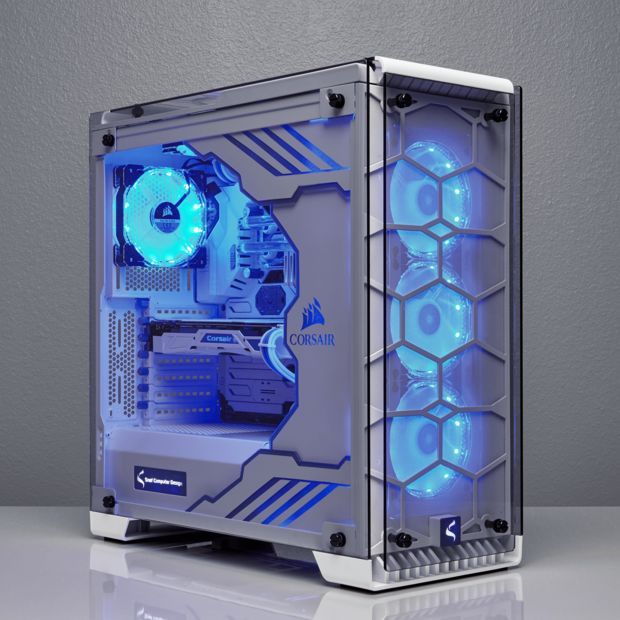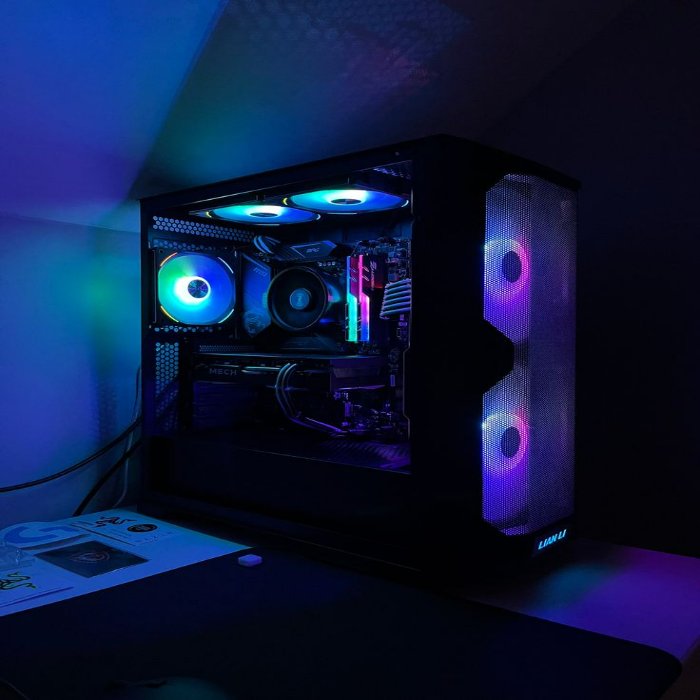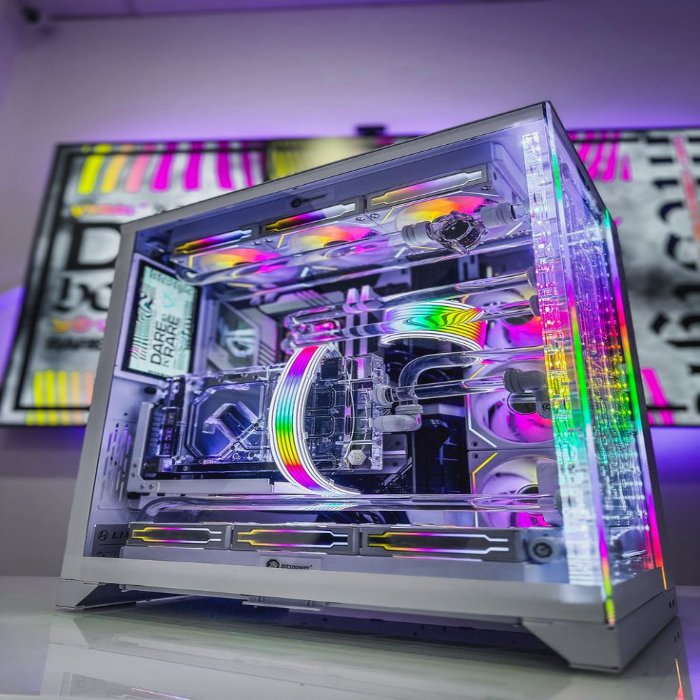Building a custom computer can be both exciting and intimidating. Among the many components you need to choose, the computer case is crucial. A computer case is not just an aesthetic element; it plays a vital role in protecting your hardware, ensuring proper airflow, and making upgrades easier. This guide will talk you what is a computer case, why it matters, and how to select the right one for your specific needs.
Understanding the Basics of a Computer Case
A computer case, also known as a chassis or tower, is the enclosure that houses all the internal components of a computer. It stores the motherboard, power supply unit (PSU), storage drives, and graphics card. When you look at a computer, the case is the part that often captures your attention first. While it might seem like an afterthought, choosing the right case is crucial for your build’s overall functionality.
The computer case serves multiple purposes beyond holding components. It protects them from dust and physical damage, allows for secure installation, and makes it easier to manage cables. A well-designed case will not only look good but will also optimize airflow and cooling, which can significantly impact performance and longevity. Choosing the right case involves understanding its different types, sizes, and features.

Types of Computer Cases: Finding the Right Fit
When you’re in the market for a computer case, you’ll discover various types, each designed with specific utilities in mind. The most common types include full towers, mid-towers, and mini-towers. Full-tower cases offer maximum space, ideal for high-end builds, while mid-tower cases balance size and functionality. Mini-towers are compact, making them suitable for small office setups or basic uses.
Full-tower cases generally provide more room for expansion. If you plan to install larger components like multiple graphics cards or elaborate cooling systems, a full tower is ideal. On the other hand, if you’re building a mid-range gaming PC, a mid-tower might suffice. Mini-tower cases are suitable for budget builds but come with limitations regarding upgrade potential.
In addition to standard tower sizes, consider specialized form factors such as micro ATX or mini ITX cases. These are designed for smaller motherboards and can be a great option if space is a constraint. Understanding your needs and future upgrade plans will help you decide which type of case best suits your project.
Size Matters: Choosing the Right Form Factor
When selecting a computer case, its form factor is crucial. The form factor determines compatibility with motherboards and other components. Most standard cases support ATX motherboards, but if you’re going with a smaller board, you’ll need to find a case that fits.
It’s also vital to consider the internal layout of the case. Does it support large graphics cards? How many fans can it accommodate? These factors affect not only assembly but also cooling efficiency. Good airflow improves performance and prolongs the hardware’s life.
Another aspect to contemplate is the height of CPU coolers. Some cases might restrict the size of your cooling solution, impacting your system’s cooling capability. Research available space for both air and liquid coolers to ensure the chosen case provides adequate clearance.

Material and Build Quality: What You Need to Know
The material and build quality of the case can have a significant impact on durability and aesthetics. Common materials include steel, aluminum, and plastic. Steel cases offer great durability and are less expensive, while aluminum cases are often lighter and more visually appealing but can come at a higher price.
Another factor to consider is the thickness of the metal used in the case. A thicker gauge offers better durability but can also add weight. Pay attention to the overall build quality; cases that flex or feel flimsy might not hold up well over time. A sturdy case will not only protect your components but will also last through multiple builds.
A well-constructed case will reduce vibration noise from the components, particularly hard drives and fans. Additionally, it often improves airflow. Look for features such as rubber grommets for cable management and reinforced mounting points—these subtle touches add to the overall user experience.
Cooling Solutions: Importance of Proper Airflow
Cooling is a critical consideration when selecting a computer case. Efficient airflow helps maintain optimal temperatures for your CPU and GPU, minimizing the risk of overheating. Most cases come with pre-installed fans, but the number and quality can vary significantly.
Before you make a decision, evaluate the airflow design of the case. Does it support front-to-back airflow? Are there vents in the right places to keep air moving freely? Some cases offer additional fan mounts, allowing you to customize your cooling solution with aftermarket options.
Consider liquid cooling solutions if you’re building a high-performance rig. Some cases are explicitly designed to accommodate large radiators for liquid cooling. If you opt for such a setup, ensure your case can support the size of the radiator you plan to install.

Aesthetic Considerations: Style Meets Function
In today’s gaming and PC-building culture, aesthetics play a significant role in case selection. RGB lighting, tempered glass panels, and modular designs can add a personalized touch to your build. Many enthusiasts enjoy showcasing their components through a transparent side panel, so consider how the case will look in your environment.
Different finishes and colors can also impact your aesthetic decision. Some cases come in sleek black or white options, while others offer vibrant colors and unique designs. Whatever your preference, aligning aesthetics with functionality is essential for an enjoyable user experience.
If you’re looking to create a themed build, many manufacturers now cater to specific styles. Look for cases that align with your gaming setup or personal tastes. However, don’t let aesthetics overshadow essential features, as a visually appealing case should still meet your performance and cooling requirements.
Cable Management: Keeping Your Build Tidy
Good cable management is vital for both aesthetics and functionality. A well-organized build not only looks better but aids airflow and makes future upgrades easier. When choosing a case, look for features that facilitate effective cable management, such as grommeted holes and ample space behind the motherboard tray.
Many modern cases come equipped with built-in cable routing options. Some even include Velcro straps or tie-down points. These features simplify the process of keeping cables out of airflow paths, resulting in better cooling performance.
Poor cable management can lead to overheating and increased noise levels. Dust accumulation can also become a problem, as cables can block airflow to fans and other critical components. Investing extra time in managing cables properly will ensure your system runs quietly and efficiently.
Budget Considerations: Balancing Cost and Quality
While shopping for a computer case, it’s essential to establish a budget. Cases are available at various price points, ranging from budget options to high-end models with premium features. However, keep in mind that spending a bit more on a case can make a significant difference in the long run.
Evaluate which features are essential to your build and which are optional luxuries. A case that provides excellent airflow and good build quality can save you from overheating issues in the future. It might be wise to invest a bit more upfront rather than compromising and regretting your decision later.
Research multiple brands and customer reviews to get a sense of what you can expect in your price range. Various websites offer comparisons and insights, making it easier to identify the right case for your needs without overshooting your budget.
Future-Proofing Your Build: Considerations for Growth
As technology constantly evolves, consider future-proofing your build. A case that accommodates upgrades will save you time, effort, and money down the line. This involves selecting a case with ample space for additional components and efficient cooling features for potential future hardware.
Look for cases that support larger graphics cards, more drives, and upgraded cooling solutions. If you think you might want to add components in the future, it’s wise to opt for a larger case to avoid compatibility issues.
Also, consider the availability of additional aftermarket parts like additional fans or radiators. Opting for a case that is compatible with these components will ensure you can adapt to technological advancements as they arise.
Conclusion: Making an Informed Choice
Choosing the right computer case is a fundamental step in building a custom computer. By understanding different types, sizes, materials, cooling solutions, and aesthetic considerations, you empower yourself to make an informed decision.
Invest time in researching and reflecting on your specific needs. A well-chosen case not only enhances the performance of your system but also complements your style preferences. Remember to consider future upgrade potential when making your selection.
With this guide in hand, you can approach your case selection confidently, ensuring you choose the right enclosure for your custom build. Your future self will thank you for making a thoughtful choice today.